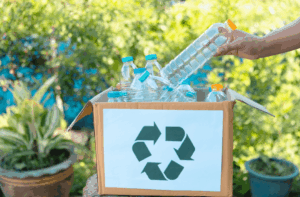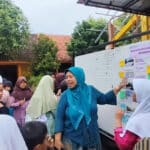Operationalising sustainability means taking those high-level environmental and social ideals and embedding them into an organization’s day-to-day decisions, systems, and behaviours. It’s about making sustainability real, measurable, and continuous.
Below, we explore how leading companies and industries successfully translate sustainability from strategy to action, and how businesses of any size can start doing the same.
Switching to Renewable Energy Sources
 One of the most impactful ways to operationalise sustainability is by reducing reliance on fossil fuels.
One of the most impactful ways to operationalise sustainability is by reducing reliance on fossil fuels.
- Installing solar panels or wind turbines at company facilities.
- Signing long-term contracts with renewable energy providers.
Real-world examples:
- IKEA powers nearly 100% of its global operations with renewable energy.
- Tesla uses solar-powered Supercharger stations and aims for solar-powered manufacturing
Sustainable Sourcing and Procurement
- Shifting suppliers to those offering lower environmental impact, like local sourcing to minimize transport emissions.
- Choosing eco-friendly materials: recycled, biodegradable, or sustainably harvested.
Real-world examples:
- Patagonia uses organic cotton and recycled polyester across its product lines.
- IKEA focuses on circular design and reducing virgin material use.
Waste Reduction and Recycling Initiatives
Circularity is key to long-term sustainability
- Implementing comprehensive recycling systems for offices and facilities.
- Designing products for repair, reuse, and easy recycling.
Real-world examples:
- Steelcase offers take-back and recycling programs for office furniture.
- Patagonia’s Worn Wear program repairs and resells used gear.
Promoting Sustainable Transport
- Encouraging or providing electric vehicle fleets for employees or deliveries.
- Supporting public transportation or bicycling.
- Reducing business travel through remote work and virtual meetings.
Conserving Resources in Daily Operations
- Paperless workplaces using digital tools.
- Investing in efficient devices, lighting, and smart waste management.
- Monitoring and reducing water and energy use via technology.
Responsible Product Design and Packaging
- Using minimal or fully recyclable packaging.
- Creating products that are durable, repairable, and made with recycled content.
Real-world example:
-
Apple uses 99% fiber-based product packaging and builds devices for energy efficiency and easy recycling.
Community and Supply Chain Engagement
- Working with suppliers and local communities to implement fair trade and sustainable agriculture.
Real-world examples:
-
Alter Eco works with small farming co-ops to promote sustainable agriculture.
-
Unilever integrates sustainability across all of its brands and supply chains.
Measuring and Reporting Sustainability Data
- Embedding sustainability metrics (carbon footprint, water use, % recycled materials) into company performance dashboards.
- Reporting regularly and adjusting operations based on results.
In practice, operationalizing sustainability can start small. For example, a day nursery might recycle all paper and cardboard waste, install motion-sensitive lighting, source coffee for the breakroom from fair-trade, organic suppliers. Groups of nurseries can scale these up and invest in system-wide change-embedding sustainability into procurement, production, logistics, product development, employee engagement and pedagogy.
These examples show operationalising sustainability means acting deliberately and measurably, ensuring environmental goals are woven into every aspect of company operations and decision-making.




